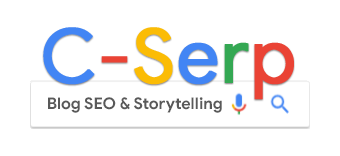Google Ads Target Impression Share explained: Pros, cons, and when to use it

Target Impression Share is a bidding strategy that often raises questions.
In this article, I’ll walk you through:
- What is Target Impression Share bidding in Google Ads?
- How does Target Impression Share work?
- Five unique properties of Target Impression Share bidding
- When does it make sense to use Target Impression Share?
- Monitor these metrics closely when using Target Impression Share
- My Expert Recommendation: Focus on conversions instead
What is Target Impression Share bidding in Google Ads?
Target Impression Share is a unique bidding strategy in Google Ads because it focuses solely on impressions. Essentially, you’re telling Google, “I want my ad to show up at least a certain percentage of the time for searches relevant to my keywords.”
Think of it like buying a billboard on the side of the highway. With Target Impression Share, you’re focused on how many people see your ad, not necessarily how many actually come and buy something. You’re bidding for visibility.
How does Target Impression Share work?
When you use Target Impression Share bidding, you choose a placement and percentage.
Target Impression Share placements
For the placement, you can tell Google where you want to ensure your ad appears on the search engine results page:
- Absolute Top: This means your ad will aim for the very first position among the paid search ads. Note that your ad could still be below other SERP features like AI Overviews, Shopping ads, Local Services Ads, etc.
- Top of Page: Your ad will aim to appear anywhere in the top section of the paid search ads.
- Anywhere on Page: Your ad can appear anywhere on the search engine results page, including the top or bottom ads.
I generally recommend focusing on “Top” or “Absolute Top” if you’re going to use Target Impression Share, because visibility significantly drops as you move further down the page. If you’re going for impression share, you probably want those impressions to be highly visible.
Target Impression Share percentages
Once you choose a placement, you also set a target impression share percentage. This is the “Target” part of the bid strategy. For example, you might aim for 80% top impression share, meaning you want your ad to show up among the top ads for 80% of eligible searches.
Google’s automated system will then adjust your bids in real-time to try and achieve that impression share target, in your chosen position.
Five unique properties of Target Impression Share bidding
I mentioned that Target Impression Share is a unique bid strategy; here are four key features that make it so unusual:
- Impression-based, but pay per click: This is a crucial distinction. While you’re bidding for impressions (visibility) with Target Impression Share, you still pay when someone clicks on your ad, just like with a click or conversion-based bid strategy. If people don’t click, you don’t pay for your impressions. This is in contrast to the other impression-based bid strategies (Target CPM and Viewable CPM), where you do pay for impressions, not clicks.
- Limited campaign types: You can only use Target Impression Share in Google Search campaigns. It doesn’t extend to Search Partners or the Display network, only to Google Search inventory.
- Ignores most bid adjustments: Target Impression share is not a Smart Bidding strategy, but it is an automated bid strategy. That means if you have bid adjustments set up for things like location or audience, Target Impression Share will ignore them. The one exception is a -100% device bid adjustment, which you can use to completely opt out of showing on a specific device.
- Maximum CPC bid limit: You can set a maximum CPC bid limit with Target Impression Share. This allows you to put a cap on how much you’re willing to pay per click, even as Google tries to achieve your impression share goal.
- Portfolio bidding: If you want to, you can use Target Impression Share as part of a portfolio bid strategy across multiple Search campaigns.
When does it make sense to use Target Impression Share?
While I usually advocate for conversion-focused strategies, there are specific scenarios where Target Impression Share might make sense for your Google Ads account:
- Brand term protection: Many businesses use Target Impression Share on their brand keywords. The idea here is to ensure that whenever someone searches for your specific company name or brand, your ad consistently appears at the very top. This helps to defend against competitors bidding on your brand terms and ensures you own that prime real estate.
- Core query dominance: For certain keywords that are absolutely vital to your business, you might want to guarantee visibility. For example, if you’re a plumber and want to ensure you always show up for “emergency plumber near me,” Target Impression Share could be an option.
Even in these cases, though, my personal preference usually remains with Smart Bidding strategies that optimize for results. Why? Because ultimately, for most businesses, the true measure of Google Ads success isn’t just eyeballs; it’s tangible results like leads, sales, or revenue.
Monitor these metrics closely when using Target Impression Share
If you decide to use Target Impression Share, keep a very close eye on these three Google Ads metrics:
- Click-Through Rate (CTR): Since you’re paying per click, even though you’re bidding for impressions, a low CTR can be problematic. If your ads are showing a lot but not getting clicks, this can drive up your CPCs and negatively impact your Quality Score.
- Quality Score: This is Google’s rating of the relevance and quality of your ads, keywords, and landing pages. If your Quality Score drops because your ads aren’t getting clicked on, despite high impression share, your cost per click (CPC) will likely increase in the future.
- Cost Per Click (CPC): Monitor your CPCs closely. Target Impression Share will try to win auctions to hit your impression goal, and that might mean higher CPCs, especially if you’re aiming for “Absolute Top.” This will only be sustainable if your landing page does a good job of converting those clicks into customers.
My expert recommendation: Focus on conversions instead
Ultimately, if your primary goal is just visibility on Google Search, Target Impression Share is an option. However, I usually find that Maximize Clicks (if your goal is traffic) or, even better, Maximize Conversions (if your goal is results) are more aligned with profitable advertising.
While visibility is important, it’s usually a means to an end. For most businesses, the end goal of Google Ads is to generate actions: conversions. Whether that’s a purchase, a lead form submission, a phone call, or an appointment booking, these are the metrics that directly impact your bottom line.
Remember, your Google Ads campaigns should be working towards your business goals. If those goals are leads and sales, then your bid strategy should reflect that.
This article is part of our ongoing bi-weekly Search Engine Land series, Everything you need to know about Google Ads in less than 3 minutes. Every other Wednesday, Jyll highlights a different Google Ads feature, and what you need to know to get the best results from it – all in a quick 3-minute read.


